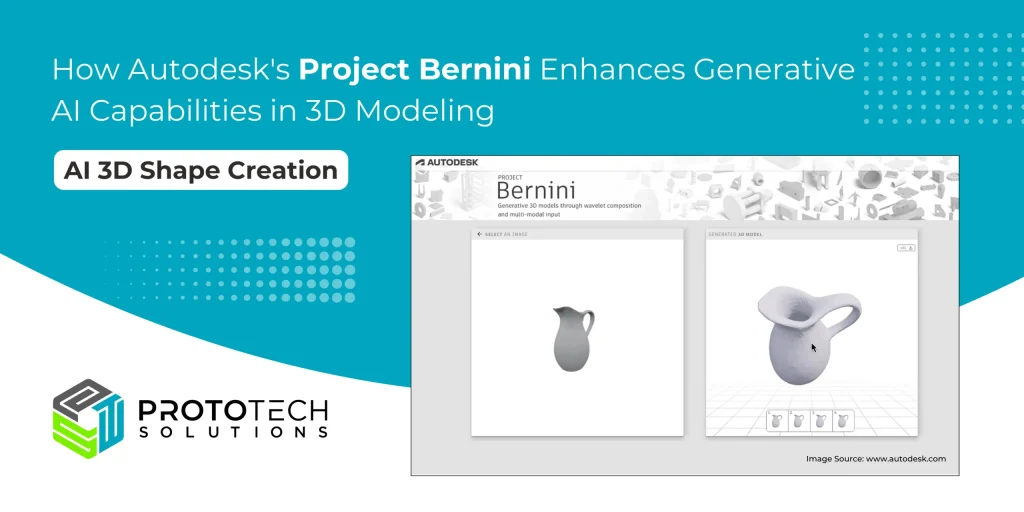Revolutionizing Technology: The Top 5 AI and ML Trends to Watch Out for in 2024

As technology continues to evolve, artificial intelligence (AI) and machine learning (ML) are becoming increasingly important. These groundbreaking technologies can transform industries and change the world as we know it. With the synergy between AI and ML gaining momentum, the year 2024 is poised to bring about revolutionary advancements that we have never seen before. Keep an eye out for the groundbreaking developments that will shape the future of technology as we know it. In this blog, we’ll discover the top 5 AI and ML trends that will revolutionize technology by 2024. Stay ahead of the game and prepare for the future with these game-changing innovations.
Top 5 Artificial Intelligence (AI) Trends For 2024
The following are the top 05 AI trends in 2024:
1. Generative AI
2. Explainable AI (XAI)
3. AI-Driven Augmented and Virtual Reality
4. AI-Driven Personalization
5. AI Ethics and Responsible AI – A Growing Imperative
Let’s have a look at these top AI trends in brief:
1. Generative AI – From Creativity to Innovation

Generative AI is a type of artificial intelligence that enables machines to create original content, rather than simply processing and analyzing data. This breakthrough technology has the potential to revolutionize many industries, from advertising and marketing to entertainment and art. By allowing machines to generate new and innovative ideas, generative AI can pave the way for breakthroughs in creativity and innovation.
The key to generative AI’s success is its ability to learn from existing data and use that knowledge to create new content. This can range from simple tasks like generating new images or music, to more complex tasks like creating entire marketing campaigns or designing new products. The possibilities are endless, and the potential benefits are huge.
One of the most exciting applications of generative AI is in the field of art and design. Artists and designers can use generative AI to create new and unique pieces that were previously impossible to achieve. For example, generative AI could be used to create a constantly evolving sculpture that changes over time or to generate new patterns and designs for fabrics and textiles.
Another area where generative AI is making a big impact is in the field of marketing and advertising. By using generative AI to create new and innovative ads and campaigns, companies can stand out from the competition and reach new audiences. This can lead to increased sales, brand recognition, and customer loyalty.
2. Explainable AI (XAI)

Explainable AI (XAI) is set to become a major trend in the field of artificial intelligence by 2024. XAI is a subset of AI that aims to make the decision-making process of AI systems more transparent and understandable to humans. This technology will allow individuals to understand how AI systems arrive at their decisions, making it easier for them to trust and use these systems. With the increasing use of AI in various industries, XAI will become a critical component for ensuring that these systems are reliable, ethical, and fair. As we move towards a future where AI becomes more integrated into our daily lives, XAI will be instrumental in helping us understand and benefit from these systems.
3. AI-Driven Augmented and Virtual Reality

AI-driven augmented and virtual reality are expected to witness significant growth by the year 2024. With the integration of artificial intelligence, AR and VR technologies are becoming more interactive, personalized, and intuitive for users. AI-powered AR and VR devices are capable of processing large amounts of data and analyzing them in real time, providing users with a more immersive and intelligent experience.
One of the applications of AI-driven AR and VR is in the healthcare industry. Doctors and surgeons can use AR and VR devices to get a detailed view of a patient’s anatomy and plan surgeries accordingly. AI-powered AR and VR can also be used for training purposes in the medical field, allowing medical students to practice surgeries and procedures in a safe and controlled environment.
AI-driven AR and VR can also be used in the education sector, providing students with a more immersive and interactive learning experience. For instance, AI-powered AR and VR devices can simulate historical events and places, allowing students to experience them more engagingly and interactively. Overall, AI-driven augmented and virtual reality are expected to revolutionize various industries by providing users with a more intelligent, personalized, and immersive experience. As AI technology continues to evolve, we can expect even more innovative applications of AR and VR in the near future.
4. AI-Driven Personalization

AI-driven personalization is set to become a major trend in the coming years, with experts predicting that it will transform the way businesses interact with their customers by 2024. This technology uses artificial intelligence to analyze customer data and provide personalized recommendations and experiences tailored to each individual’s unique needs and preferences.
With the rise of big data and advanced machine learning algorithms, AI-driven personalization is becoming increasingly sophisticated. It can now analyze vast amounts of data, from browsing and purchasing histories to social media activity and customer feedback, to provide personalized recommendations and experiences that are highly targeted and relevant to each individual.
In the coming years, we can expect to see AI-driven personalization become even more ubiquitous, with businesses of all sizes using this technology to gain a competitive edge. From e-commerce sites to social media platforms, AI-driven personalization will be used to create more engaging, personalized experiences for customers, leading to increased loyalty, higher conversion rates, and more revenue.
However, as with any emerging technology, there are also potential risks and challenges associated with AI-driven personalization. Privacy concerns, data security, and ethical considerations will all need to be addressed to ensure that this technology is used responsibly and transparently.
5. AI Ethics and Responsible AI – A Growing Imperative

As artificial intelligence continues to permeate every aspect of our lives, the need for AI ethics and responsible AI practices is becoming increasingly urgent. By 2024, experts predict that this will become a major focus for governments, companies, and individuals alike, as we seek to ensure that AI is developed and used in a way that is ethical, transparent, and accountable.
AI ethics covers a wide range of issues, from data privacy and security to bias and discrimination, and requires careful consideration of the potential risks and benefits associated with AI. On the other hand, responsible AI practices involve developing and implementing AI systems in a way that is transparent, explainable, and accountable, taking into account the broader social and ethical implications of these technologies.
As AI becomes more pervasive and powerful, it is crucial that we develop a shared understanding of what constitutes ethical and responsible AI, and that we work together to ensure that these principles are upheld. This will require collaboration between governments, businesses, and civil society, as well as ongoing research and development to ensure that AI is developed in a way that reflects our shared values and priorities.
Ultimately, the success of AI will depend on our ability to develop and implement AI ethics and responsible AI practices in a way that is sustainable, equitable, and beneficial for everyone. By working together to address these critical issues, we can ensure that AI is a force for good in the world and that it helps us to address some of the most pressing challenges we face as a society.
Artificial Intelligence Market Size 2024

The market growth of AI software is expected to be significant by 2024, with forecasts predicting a compound annual growth rate (CAGR) of around 30%. The increasing demand for AI-powered solutions across various industries, including construction, healthcare, finance, and retail, is driving this growth. The growing adoption of machine learning algorithms, natural language processing, and computer vision technologies is expected to fuel the growth of the AI software market in the coming years. Additionally, the rising investment in AI research and development, coupled with advancements in cloud computing and big data analytics, is expected to further boost the growth of the AI software market. With AI becoming an integral part of many businesses, the market for AI software is expected to continue to grow at a significant rate in the years to come.
Empower Your AEC Industry Project with the Driving Force of AI Software
Are you ready to take your AEC industry project to the next level? Let AI software be the driving force behind your success! Improve your AEC industry projects with ProtoTech Solutions’ advanced AI software. Our software leverages the power of artificial intelligence to seamlessly integrate into your workflows, resulting in optimized design, analysis, and project management. From automated 3D modeling to predictive analytics, ProtoTech’s solution empowers your team to drive innovation, reduce costs, and deliver outstanding results in the dynamic landscape of architecture, engineering, and construction. With ProtoTech’s AI-powered software, precision and intelligence meet to transform your projects and take them to the next level. Experience unparalleled efficiency and take your business to new heights with the future of AEC.
Final Thoughts
The year 2024 is witnessing a convergence of AI and ML trends that promise to reshape our world in profound ways. From addressing the transparency challenge with Explainable AI to delivering personalized experiences, harnessing the power of Edge AI, emphasizing AI ethics, and unlocking innovation through Generative AI, these trends are shaping the future of technology. As we navigate this AI-powered landscape, it’s crucial to stay informed and embrace these transformative trends responsibly for a more intelligent and equitable world.



